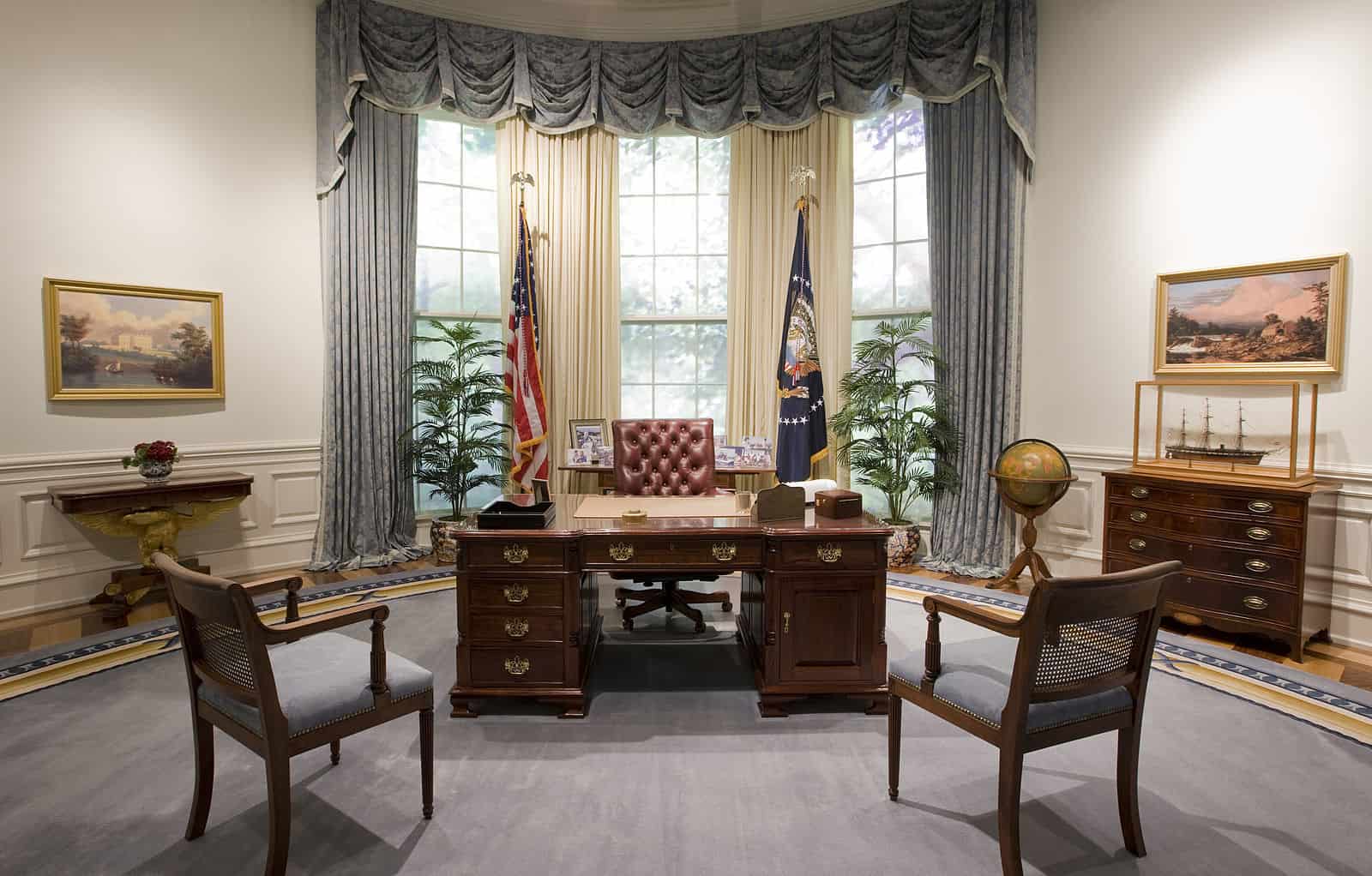
A few months into George W. Bush’s presidency, a U.S. Navy spy plane on a surveillance mission near Hainan island collided with a Chinese fighter jet, forcing the American plane to make an emergency landing in mainland China — in turn, kicking off a diplomatic nightmare.
Following the crash, President Bush repeatedly tried to call then-Chinese leader Jiang Zemin to diffuse the situation. But after around 12 attempts and “several agonizing days,” as Bush describes in his memoir Decision Points, the EP-3 plane and crew were still in Chinese hands.
“Before any dialogue [between Bush and Jiang] was established, [the] EP-3 [incident] happened,” says Michael J. Green, who was then in his first week at the National Security Council as director for Asian affairs.
“That made it clear that dialogue at the level of the president was incredibly important,“ adds Green, who is now senior vice president for Asia at the Center for Strategic and International Studies. “When you don’t have a dialogue channel, and you have a crisis like this, there is no one to talk to!”
Eventually, Bush agreed to write a letter of apology and the EP-3 crew was released. But the incident has remained a cautionary tale for every administration since about what can happen when communication channels between the presidents of the world’s two most powerful nations break down.
For sure, the current state of bilateral communications is a far cry from back in 1971, when then-National Security Advisor Henry Kissinger made the secret trip to China that paved the way for his boss, President Richard Nixon, to visit the then poor and largely-closed Asian nation the following year.
But with U.S.-China relations arguably now more tense than at any time since, there is concern about how the two sides would communicate during a crisis, such as a clash over Taiwan or the South China Sea. President Biden has only spoken once by phone with his counterpart Xi Jinping since coming to office in January.

“It is always better to talk to your adversary, or whatever you call it. Then you get a sense of their green lines and red lines,” says Jeffrey Bader, who has served in various China-related roles in government and now is a senior fellow at the Brookings Institution. “One thing I can say with confidence is that in the absence of communication, you make the wrong decisions.”
As with most other countries, the U.S. follows formal processes for leader-to-leader communication with China. Usually, the American or Chinese president sets up a phone call with their counterpart through their respective ambassadors in Washington and Beijing.
The seemingly routine procedure is, however, particularly difficult with China. “From a process standpoint, it was always frustrating how long it took. With leaders like [Canadian prime minister Justin] Trudeau, it was a seamless process, it took a few hours,” says Ryan Hass, the NSC director for China, Taiwan and Mongolia under the Obama administration and now a senior fellow at Brookings. “I would watch with envy how my colleagues at the National Security Council were able to arrange leader-level communications with other countries with such relative ease.”
Once calls are underway, the U.S. president is generally accompanied by the NSC point person, an interpreter and a note-taker, who transcribes the conversation for later reference. It’s less clear who is listening in on the Chinese side, although Bader, the former U.S. official, says a Chinese counterpart once told him that around 50 people are on the line. “They don’t worry about leaks,” Bader jokes.
During the Cold War, a so-called ‘Hot Line’ between the U.S. and the Soviet Union was put in place following the Cuban Missile Crisis in 1962. The system, which is still operational today, relies on electronic messages translated, more or less instantaneously, into the other country’s language, according to Mark Kramer, director of the Cold War Studies Project at Harvard University’s Davis Center.
“It is always better to talk to your adversary, or whatever you call it. Then you get a sense of their green lines and red lines,”
Jeff Bader, a former senior advisor on Asian affairs to President Obama
Sino-American communications don’t rely on this type of ‘Hot Line.’ Instead, a direct, encrypted phone line between the White House and Zhongnanhai — China’s leadership compound — was set up during the Clinton administration to smooth the communication process. It was first used in 1998, when President Clinton tried to convince Jiang Zemin to dissuade China’s ally Pakistan from conducting a nuclear test, according to Bader, who was then serving as the NSC’s director for Asian affairs. The two leaders didn’t make much headway on that topic, says Bader, who was present in the Oval Office for the dialogue.
Such calls are challenging partly because they are highly scripted, especially on the Chinese side. “The Chinese are quite reluctant to do phone calls at that level,” says Susan Thornton, former acting Assistant Secretary of State for East Asian and Pacific Affairs and now a senior fellow at Yale Law School’s Paul Tsai China Center. “The Chinese leader is not really a negotiation guy; he doesn’t come to meetings and talk about details.”
The U.S. president is also generally unwilling to speak off-the-cuff, although former President Donald Trump was an exception. “Trump never had a script,” says John Bolton, Trump’s National Security Advisor from 2018 to 2019. “He had a general idea of what he wanted to say, but he never prepared.”

During one call with Xi Jinping in May 2018, according to Bolton, Trump spontaneously decided to reverse sanctions on ZTE, a Chinese telecoms giant. Bolton, who was then in the Oval Office, says, “I didn’t give a reaction, but I thought it was a mistake. Trump gave it as a personal favor to Xi. And Xi was delighted to hear it. I don’t speak Chinese, but you could just tell it in his tone, and the tone of the interpreter.” This episode is also referenced in Bolton’s recent book, The Room Where it Happened. Trump has denied and sought to discredit much of the book’s content.
Despite the often predictable and stilted nature of many of these calls, former officials say that president-to-president communications are key for setting and communicating their respective priorities. “What the presidents say about how the relationship is going to go is important in directing the huge, titanic bureaucracy beneath them,” says Thornton.
And in the case of a crisis, though substantial communication will likely occur at lower levels, a presidential intervention can expedite the resolution. “But you don’t want to have the first contact [between presidents] after a crisis,” adds Hass. “You want to have established a cadence of communication that works.”

Katrina Northrop is a journalist based in New York. Her work has been published in The New York Times, The Atlantic, The Providence Journal, and SupChina. @NorthropKatrina



